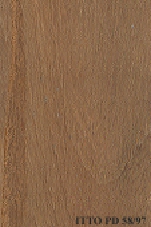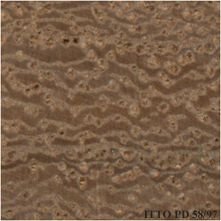
BUNGUR (Lagerstroemia speciosa)
Trade Name
Bungur
Scientific Name
Lagerstroemia speciosa (L.) Pers.
Family
Lythraceae
Common Names
Ye-pyinma; Thwa-u; Thwa-mu; Tanbangau; Taman; Tabangao; Tabaek; Shem marutha; Sekre; Queens flower; Pyinma-ni; Pumaruthu; Pu maruthu; Parasabukung; Pantahaun; Pamarauagon; Pamalauagon; Pamalasagon; Nirmarud; Nir-venthekku; Nir maruthu; Nir marutha; Nabulong; Muruta; Mota bondara; Mitla; Mani-maruthu; Mani maruthu; Manaba; Makabalo; Mai-sa-hpong; Kau-ilan; Kamaungni; Kamaung; Kadali; Jarul; Intannin; Hole-dasal; Hani; Gawknguchyamang; Gara saikre; Gara; Einmwe; Eikmwe; Challa hole dasal; Bungor ayer; Bungor; Bondara; Bolashari; Batiladhan; Banang-pulo; Aropag; Ajhar; Agupanga; Adamboe; Abak; Queen of flower; Tabeck (Thailand); Banglang (Vietnam); Jarut (India); Pyinma (Myanmar); Intanin (Thailand); Chuang muu (Thailand); Pride of India; Inthanim nam (Thailand); Tabaek dam (Thailand); Bungur (Indonesia); Gawkng-uchyamang (Myanmar); Tibabah (Sabah); Bongor biru (Sarawak); Bungor raya (Malaysia); Ketangi (Indonesia); Bungur tekuyung (Indonesia); Banaba (Philippines)
Scientific Name Synonyms
Munchausia speciosa L.; Lagerstroemia flos-reginae Retz.
Description Of The Tree
Botanical Description
It is a small to medium-sized to large tree up to 40 m tall, 60 to 100 cm in diameter. The bole is commonly short, cylindrical, often fluted near the base, branchless for up to 18 m. The buttresses are inconspicuous, rounded, low and small.
Natural Habitat
Lagerstroemia speciosa is found at low to medium altitudes in secondary forests, especially along rivers.
Natural Distribution
It is distributed in South China, Indo-China, Thailand, Myanmar, Malaysia to the Celebes and Philippines.
Plantations Available?
This species is cultivated within its distribution of origin and also in many other tropical countries.
Wood Identification
Anatomic Description Of Wood
Occasionally wood semi-ring porous and/or ring porous. Occasionally tangential diameter of vessel lumina 200 micras or more. Occasionally tangential diameter of vessel lumina 100 micras or less. Vestured pits. Occasionally vessels per mm2 more than 20. Occasio Occasionally paratracheal axial parenchyma scanty and/or vasicentric. Occasionally axial parenchyma aliform. Axial parenchyma confluent. Two cells per parenchyma strand. 3 to 4 cells per parenchyma strand. Occasionally 5 to 8 cells per parenchyma strand. Occasi Rays exclusively uniseriate. Homogeneous rays and/or sub-homogeneous rays (all ray cells procumbent). Occasionally body ray cells procumbent with one row of upright and/or square marginal cells (Kribs-III). Septate fibers present. Fibers with simple to minutely bordered pits.
-
 Wood Macro Photo Tangential Plane
Wood Macro Photo Tangential Plane
-
 Wood Micro Photo Of Transversal Section
Wood Micro Photo Of Transversal Section
Availability
Cites Status
Unrestricted
General Wood Description
Odor
It is no distinct taste and odor.
Color
The sapwood is not clearly differentiated from the heartwood, which is reddish brown.
COLOR INDEX (1=Black, 7=Light yellow,white)
4
Grain
The grain is generally straight, sometimes wavy.
Texture
The texture varies from moderately fine to moderately coarse.
Luster
The wood is described as moderate in luster.
Natural Durability
The wood is moderately durable to durable when exposed to the weather or in contact with the ground. The heartwood is resistant to very resistant to dry-wood termites.
Natural durability index (1= Very high durability, 7=Vey low durability)
4
Silica Content
Silica Content: It is non-siliceous. Silica Value: 0
Resistance To Impregnation
The heartwood is reported to be resistant to preservative treatment, but the sapwood is readily treatable.
Wood Physical Properties
Basic Density or Specific Gravity (O.D. weight/vol. green) (g/cm³)
0.59
Air-dry Density (Weight and volume at 12%MC) (g/cm³)
0.65
Total shrinkage Tangential (Saturated to 0%MC) (%)
7.8
Total shrinkage Radial (Saturated to 0%MC) (%)
3.8
Drying Defects
Drying Defects: It is reported that during preliminary air drying surface checks usually develop.
Dimensional stability ratio (Total Tangential Shrinkage %/Total Radial Shrinkage %)
2.1
Wood Chemical Properties
Wood Mechanical Properties
Bending Strength (MOR),12%MC (kgf/cm²)
988
Stiffness (MOE) 12%MC (kgf/cm²)
104091
Compression parallel to fiber 12%MC (kgf/cm²)
491
Compression perpendicular to fiber 12%MC (kgf/cm²)
97
Shear strength radial 12%MC (kgf/cm²)
111
Janka hardness (side) 12%MC (kgf)
614
Janka hardness (end grain) 12%MC (kgf)
710
Workability
Sawing
Cutting behavior is reported to be easy to fair.
Rotary Veneer Cutting
It is very difficult to slice and peel, even after boiling for 48 hours.
Sliced Veneer
It is very difficult to slice and peel, even after boiling for 48 hours.
Machining
It is easy to machine.
Turning
30
Boring
Boring operations are rather difficult.
Finishing
This species is reported to give a good finish.
REFERENCED USES
End Uses Summary
HOUSING GENERAL, beams, flooring, frames, FURNITURE AND CABINETS, PLYWOOD AND VENEER, TURNING, cutlery, SPORTS, TOOLS, tool handles, agricultural tools, PACKING, CONTAINERS, cooperage, truck bodies, truck flooring, NAVAL CONSTRUCTION, boats, boat oars, OTHER AND MUSICAL INSTRUMENTS, pencil
General Housing
- 10 - Silica in Timbers
Beams
- 11 - Prospect: The wood database
Flooring
- 14 - Handbook of Hardwoods
Frames
- 16 - Woods of the World
Furniture Cabinets
- 21 - Tropical timbers of the world. Part III-Southeast Asian and Oceanian Species.
Panels, Veneers
- 25 - Directory of Timber Trade Malaysia
Turning
- 30 - Embassy of Honduras in Japan
Knife Handles
- 33 - Embassy of Gabon in Japan
Sports
- 38 - Annual Review and Assessment of the World Timber Situation 1998-ITTO
Tools
- 42 - Utilización Industrial de Nuevas Especies Forestales en el Perú.
Tool Handles
- 43 - Maderas de Bolivia (Características y Usos de 55 Maderas Tropicales)
Agricultural Tools
- 44 - Atlas of Peruvian Woods
Packing
- 45 - Recopilación y Análisis de Estudios Tecnológicos de Maderas Peruanas
Containers
- 50 - Properties of imported tropical woods
Cooperage
- 51 - Recopilacion de propiedades mecanicas de maderas creciendo en Chile
Truck Body
- 53 - Timbers of the New World
Truck Flooring
- 54 - Bulletin of the Government Forest Experiment Station N.157: Identification of Tropical Woods
Shipbuilding
- 55 - Tropical Timber Atlas of Latin America
Boats
- 56 - Manual de Identificación de Especies Forestales de la Subregión Andina.
Boat Oars
- 60 - Amazonian Timbers, Characteristics and Utilization Volume II; Curuá-Una Experimental Forest Station
Pencils
- 67 - Maderas latinoamericanas. VIII, Calophyllum brasilense, Couratari panamensis, Dendropanax arboreum y Bombacopsis sessilis
Please Provide Information To View Producer Information